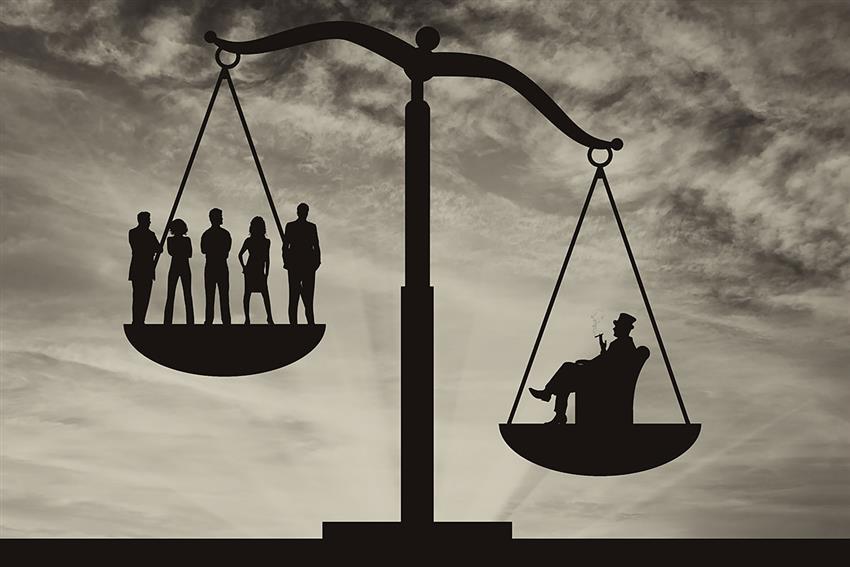 How much longer are we prepared to accept the level of inequality that exists in the world?
How much longer are we prepared to accept the level of inequality that exists in the world?
How much longer are we prepared to accept the level of inequality we now suffer in this country?
If any reader out there still doubts the extent of inequality here, do read a July 8 article in
The Conversation by Nicholas Biddle, Associate Professor, and Francis Markham, Research Fellow at the ANU College of Arts and Social Sciences titled:
What income inequality looks like across Australia.
They begin: 'With affordable houses increasingly out of reach, wage growth slow and household debt high, Australians are certainly feeling poor.' They conclude: 'Australia has prominent examples of economic policies that disproportionately benefit the upper-middle class, such as the capital gains tax discount and superannuation tax incentives. It also has a geographically concentrated income distribution, with the rich living in neighbourhoods with other rich people. The poor are also more likely to live in close proximity to people who share their disadvantage.'
Treasurer Scott Morrison though insists that inequality is lessening!
A couple of weeks ago I wrote
Inequality ambylyopia to highlight the blindness of conservatives, notably our own Treasurer, to the reality and the extent of inequality in this country. The piece argued that while the facts about inequality were abundant and visible to everyone, by the time the evidence reached their visual cortex it had become invisible, just as images transmitted by an amblyotic (lazy) eye are not interpreted properly.
Bill Shorten predicts that inequality will be an issue at the next election. This prediction is not new. In April of last year, before the 2016 federal election, I made the same prediction and wrote
Inequality will be a hot button election issue.. It didn’t turn out that way; Shorten is hoping that by the next election inequality and its awful consequences will be burned into the minds of voters, and will influence their voting as he guarantees to do something about it. He will need a sound plan, an understandable and plausible set of objectives, and some appealing slogans to attract attention.
Inequality is omnipresent and persistent. To remind us of this it is worth looking back a little to ascertain if anything has changed.
It is now well over a year since
Inequality will be a hot button election issue was published on
The Political Sword. It began:
‘Inequality’ is a term used by economists. Joseph Stiglitz has been writing for years about its damaging effect. His book: The Price of Inequality is a classic. More recently, Thomas Piketty entered the arena with his Capital in the Twenty-First Century and hypothesised about the genesis of inequality. He asserted that the main driver of inequality, namely the tendency of returns on capital to exceed the rate of economic growth, threatens to generate extreme inequalities that stir discontent and undermine democratic values. He reminded us that political action has curbed dangerous inequalities in the past and could do so again. But is anyone listening?
No matter who writes about inequality, the conclusion is the same: the gap between those at the top and those languishing at the bottom of the pile is widening in many countries, ours among them.
A more familiar way of talking about inequality is to talk about ‘fairness’, a concept every Aussie understands. The ‘fair go’ is valued by most of us. Who would argue against the idea that everyone should have a ‘fair go’?
So look out for emphasis on fairness during the election campaign. You will hear it from Bill Shorten and Labor people; you might not hear much about it from LNP people, although PM Turnbull has often insisted that whatever changes his government makes to the tax system, they must be ‘fair’. We are still waiting to see his version of fairness. Although aware of the angry reaction of the people to the unfair 2014 Abbott/Hockey Budget, he is still seeking approval of many of the elements of it in the Senate. Treasurer Morrison does not seem to have 'fair' in his vocabulary.
Have you noticed that ordinary people are becoming increasingly fed up with the inequality we see day after day where those at the top of the pile gain advantages over those at the bottom? In the past few weeks we have seethed as we saw instance after instance of this. More of this later!
If you question whether inequality really is a problem in this country, take a look at these statistics, which are based on a 2015 ACOSS study: Inequality in Australia: a nation divided:
• Inequality in Australia is higher than the OECD average.
• A person in the top 20% income group has around five times as much income as someone in the bottom 20%.
• There is an urban and regional pattern to income inequality, with people in capital cities more likely to be in the top 20%, while those outside capital cities are more likely to be in the bottom 20%.
• Wealth is far more unequally distributed than income. A person in the top 20% has around 70 times more wealth than a person in the bottom 20%.
• The top 10% of households own 45% of all wealth, most of the remainder of wealth is owned by the next 50% of households, while the bottom 40% of households own just 5% of all wealth.
• The average wealth of a person in the top 20% increased by 28% over the past 8 years while for the bottom 20% it increased by only 3%.
In other words inequality is steadily increasing.
To read the rest of this piece
click here.
What is your opinion?
What are views about inequality?
Will it be an election issue?
Let us know in comments below.
Current rating: 0 / 5 | Rated 0 times